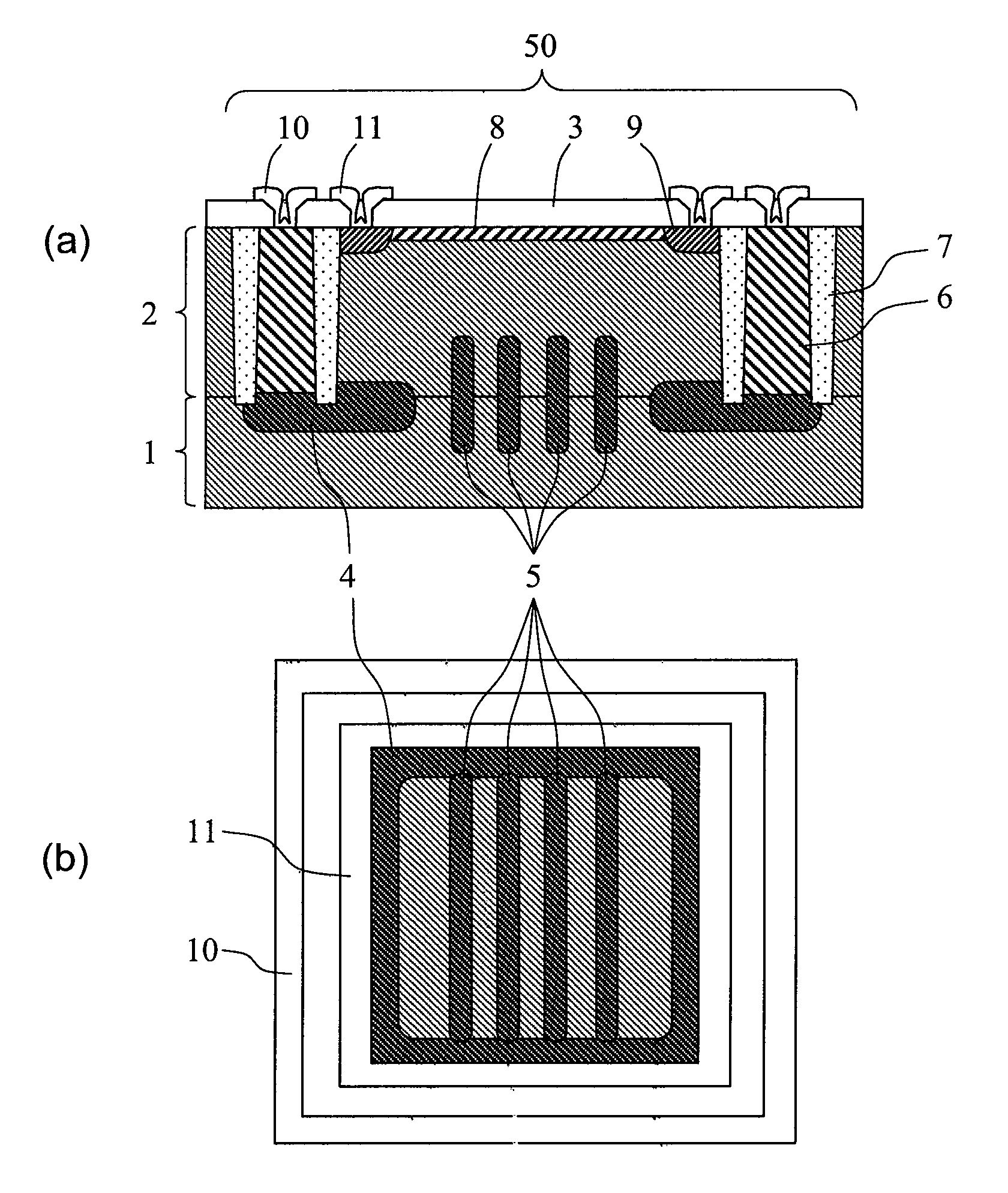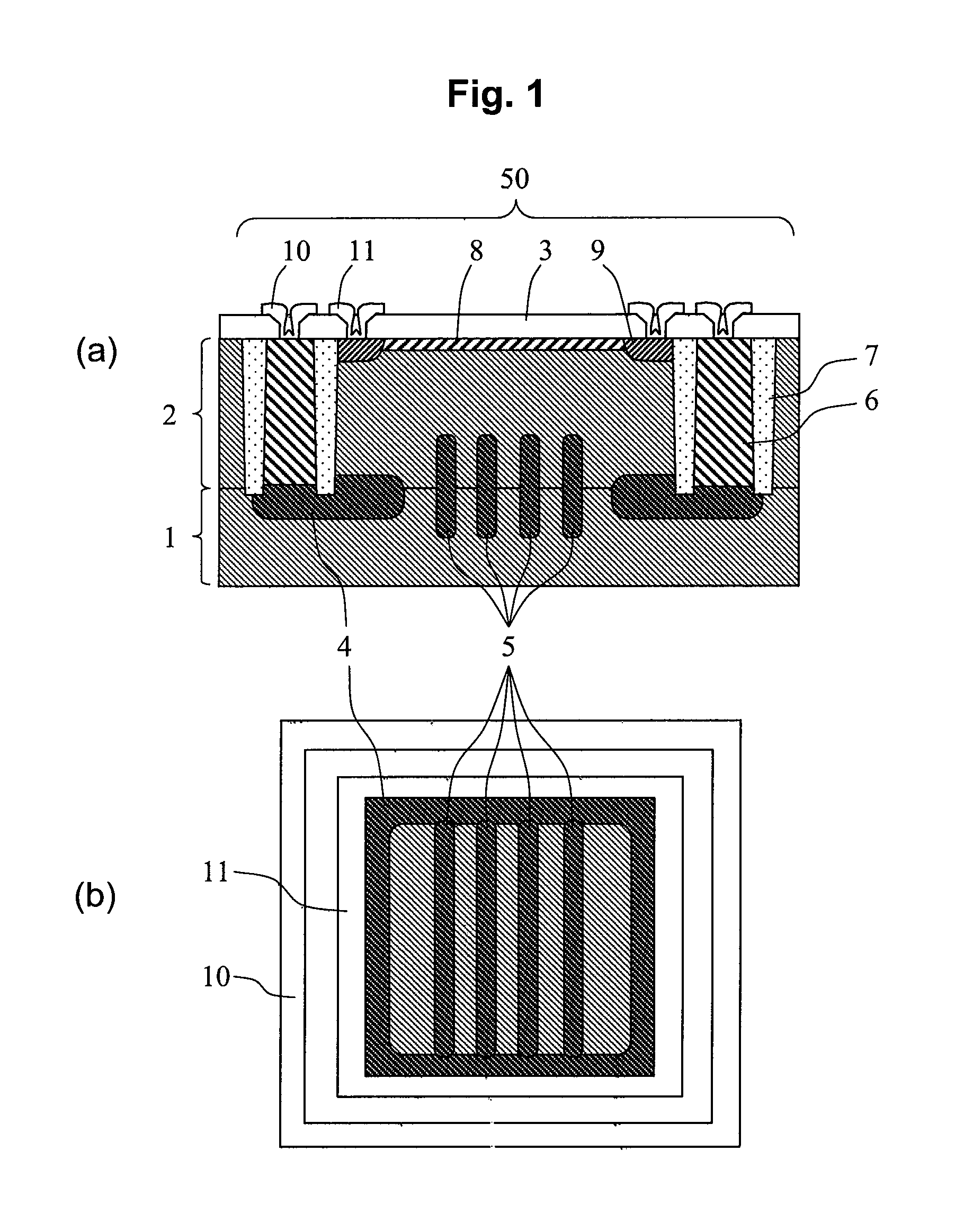Optical semiconductor device
- Summary
- Abstract
- Description
- Claims
- Application Information
AI Technical Summary
Benefits of technology
Problems solved by technology
Method used
Image
Examples
first embodiment
[0049]FIG. 1A is a cross-sectional view showing a light-receiving element of an optical semiconductor device in a first embodiment relating to the present invention. FIG. 1B is an illustration showing an exemplary planar layout of the light-receiving element. As described in detail hereafter, a light-receiving element portion 50 of this embodiment is characterized by a structure amplifying current using avalanche multiplication near a surface within a light-receiving region where incident light is converted to current signals.
[0050]As shown in the cross-sectional view of FIG. 1A, the device includes a P− type semiconductor substrate 1 consisting of a P type silicon (Si) having a low impurity concentration and a specific resistance of, for example, approximately 100 to 200 Ωcm, on which a P− type semiconductor layer 2 having a thickness of 2 μm and an impurity concentration equal to or lower than that of the P− type semiconductor substrate 1, for example, 1×1014 cm−3 is formed by usi...
second embodiment
[0071]FIG. 11 is a cross-sectional view of an optical semiconductor device (OEIC device) in the second embodiment relating to the present invention. The light-receiving element portion 50 of the optical semiconductor device according to the present invention is formed by selective ion implantation using a mask pattern through known production techniques as described above. Therefore, it can easily be integrated on the same substrate with bipolar transistors and MOS (metal oxide semiconductor) transistors, and these are formed in common process.
[0072]In FIG. 11, a first transistor portion 60 where an NPN bipolar transistor and a vertical PNP transistor are provided and a second transistor portion 70 where a CMOS transistor is provided are formed on a P− type semiconductor substrate 1 in addition to the light-receiving element portion 50. The light-receiving element portion 50, first transistor portion 60, and second transistor portion 70 are separated from each other by element separ...
PUM
 Login to View More
Login to View More Abstract
Description
Claims
Application Information
 Login to View More
Login to View More - R&D Engineer
- R&D Manager
- IP Professional
- Industry Leading Data Capabilities
- Powerful AI technology
- Patent DNA Extraction
Browse by: Latest US Patents, China's latest patents, Technical Efficacy Thesaurus, Application Domain, Technology Topic, Popular Technical Reports.
© 2024 PatSnap. All rights reserved.Legal|Privacy policy|Modern Slavery Act Transparency Statement|Sitemap|About US| Contact US: help@patsnap.com










